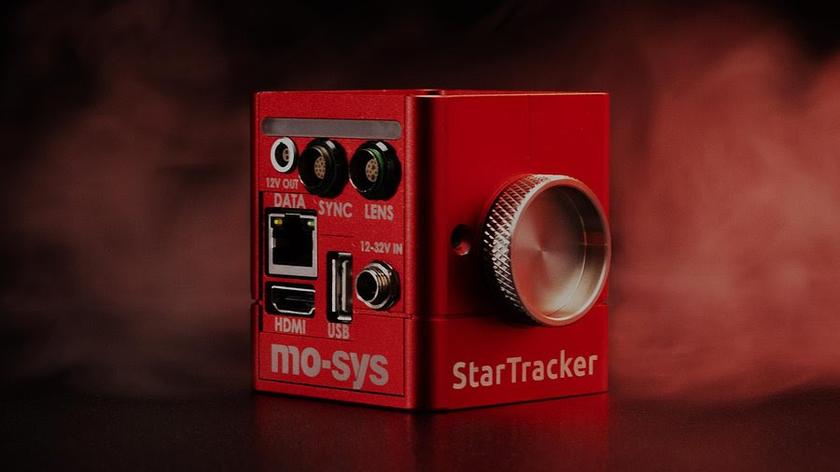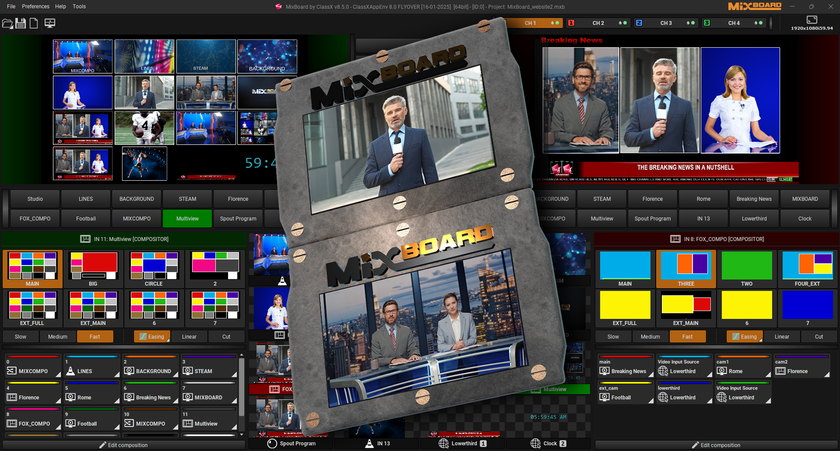ADC makes the connection for sports production

Mobile production companies that help produce sports telecasts are always on the lookout for technologies that pack the greatest amount of functionality into the smallest, lightest package possible. That’s because the million-dollar mobile studios they build have to accommodate multiperson crews, and they have to adhere to strict size and weight restrictions (53ft and 80,000lbs) imposed by the Federal Transportation Administration or risk serious fines.
ADC, based in Eden Prairie, MN, understands this dilemma and is working hard to develop its patch-panel product line to meet these and other emerging requirements. That was the thinking behind the company’s ProPatch Miniature System, an HD patch panel that includes a 2 x 48 matrix in a lightweight, 1RU enclosure made of high-impact plastic with a special metal casing to shield against signal interference. (They can also offer 2 x 96 cross points in 1.5RU.) Like many of its products, the PPM series is designed to reduce the amount of rack space required for fiber-optic and coax video and audio panels. The company’s Super High-Density Coax PPM Series includes different versions for AES audio and SMPTE 424 HD video.
Many of the busiest production companies use ADC’s panels to connect cables and route signals onboard their trucks. One company, Corplex Mobile Television (based in Lake Bluff, IL), recently updated two of its trucks with new HD gear that included the ADC PPM panel. Dave Greany, VP and partner the company, said that because higher bandwidth signals, like those that carry signals at 3Gb/s — used for full 1080p/60 HD production — continue to emerge, he’s always looking for ways to improve his fleet.
Greany said ADC’s ProPatch Series provides 30 percent more density than other similar products on the market. This translates into a third less space and half the weight of a normal patch bay, so he can get more equipment in the truck. There’s also a termination switch built into the PPM that allows his crews to easily terminate cable runs without having to use extra patch panels. This is invaluable when using a lot of wireless equipment (cameras, microphones, etc.) during a live production.
ADC offers a series of products that leverage the benefits of fiber optics and its ability to transmit bandwidth-intensive HD signals farther. This technology comes in handy for golf and race car telecasts, where long distances between the truck and the various camera positions set up on-site are the norm. Fiber is also lighter than traditional coax cabling and can handle multiple signals with one cable, which makes setup and teardown easier.
Miniaturization is the key to the latest generation of ADC patch panels, which were specifically designed for 3Gb/s operation. “Our challenge is designing ever smaller packages that can accommodate higher frequencies,” said Dean Rosenthal, broadcast and production market manager at ADC, adding that tuning the product for 3Gb/s is critical, because signal fluctuation of as little as .001 can alter frequency response by 5db. “It’s not easy. Along with electrical performance, mechanical performance is equally important to our customers.
“The important thing is to give customers the choice to use the panel they way they see fit,” Rosenthal said. “We designed a unique functionality into our products so that customers don’t have to reconfigure circuits around the jacks being used; they can configure the jacks around the circuitry.”
Get the TV Tech Newsletter
The professional video industry's #1 source for news, trends and product and tech information. Sign up below.
Although very little 3Gb/s production is occurring at the moment (and no one is equipped to bring it to the home), Rosenthal said HD truck builders are asking for his products to be compatible with the spec to protect their investment. Although the price is about 15 percent higher than the currently standard 1.5 products, it just makes sense to build for the future.
“A few people are still building 1.5Gb/s infrastructures onboard their midsized trucks,” Rosenthal said, “but anybody who’s spending several million dollars on a new rig will want to go for the best technology available at the time. They don’t want to make future changes if they don’t have to. Once a truck rolls, you don’t want to take it off the road any time soon.”
ADC design engineers have the advantage of the company’s global wireless and fiber-optic divisions, which work in very high frequencies and RF transmission. For the past few years, they have been leveraging that experience in products for the sports broadcast market, bringing the advantages to the forefront.
At the upcoming NAB Show, many of the company’s forward-looking fiber-optic technologies will be on display in the booths of ADC’s national distributors that support broadcasters and sports production companies. This includes connectivity technology in protected fiber environments, a fiber-optic jack field that mimics a traditional copper version, a hybrid coax connector and a quad fiber connector (for connecting two trucks together).
The company’s SHDC PPM Series includes different versions for AES audio and SMPTE 424 HD video. The ProPatch Miniature Series panels with SHDC jacks are available in both 1RU and 1.5RU configurations.










